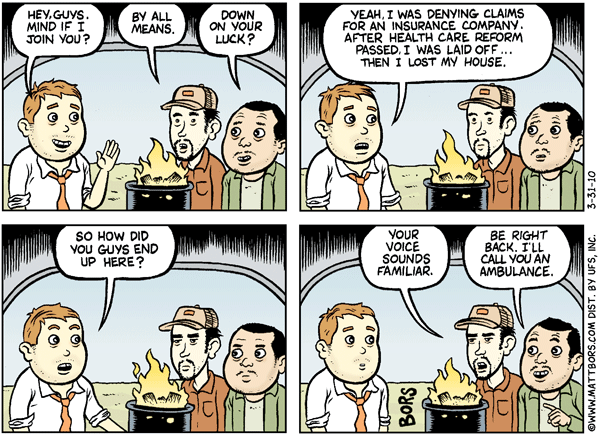
As public services in and around Birmingham were stripped to the bone, Pack struggled to support her family on a weekly unemployment check of $260. Nearly a fourth of that went to pay for her health insurance, which the county no longer covered. She also fielded calls from laid-off co-workers who had it even tougher. "I'd be on the phone sometimes until two in the morning," she says. "I had to talk more than one person out of suicide. For some of the men supporting families, it was so hard — foreclosure, bankruptcy. I'd go to bed at night, and I'd be in tears."
Homes stood empty, businesses were boarded up, and parts of already-blighted Birmingham began to take on the feel of a ghost town. There were also a few bills that were unique to the area — like the $64 sewer bill that Pack and her family paid each month. "Yeah, it went up about 400 percent just over the past few years," she says.
The sewer bill, in fact, is what cost Pack and her co-workers their jobs. In 1996, the average monthly sewer bill for a family of four in Birmingham was only $14.71 — but that was before the county decided to build an elaborate new sewer system with the help of out-of-state financial wizards with names like Bear Stearns, Lehman Brothers, Goldman Sachs and JP Morgan Chase. The result was a monstrous pile of borrowed money that the county used to build, in essence, the world's grandest toilet — "the Taj Mahal of sewer-treatment plants" is how one county worker put it. What happened here in Jefferson County would turn out to be the perfect metaphor for the peculiar alchemy of modern oligarchical capitalism: A mob of corrupt local officials and morally absent financiers got together to build a giant device that converted human shit into billions of dollars of profit for Wall Street — and misery for people like Lisa Pack.
http://www.rollingstone.com/politics/story/32906678/looting_main_street

 If you want to know what life in the Third World is like, just ask Lisa Pack, an administrative assistant who works in the roads and transportation department in Jefferson County, Alabama. Pack got rudely introduced to life in post-crisis America last August, when word came down that she and 1,000 of her fellow public employees would have to take a little unpaid vacation for a while. The county, it turned out, was more than $5 billion in debt — meaning that courthouses, jails and sheriff's precincts had to be closed so that Wall Street banks could be paid.
If you want to know what life in the Third World is like, just ask Lisa Pack, an administrative assistant who works in the roads and transportation department in Jefferson County, Alabama. Pack got rudely introduced to life in post-crisis America last August, when word came down that she and 1,000 of her fellow public employees would have to take a little unpaid vacation for a while. The county, it turned out, was more than $5 billion in debt — meaning that courthouses, jails and sheriff's precincts had to be closed so that Wall Street banks could be paid.












